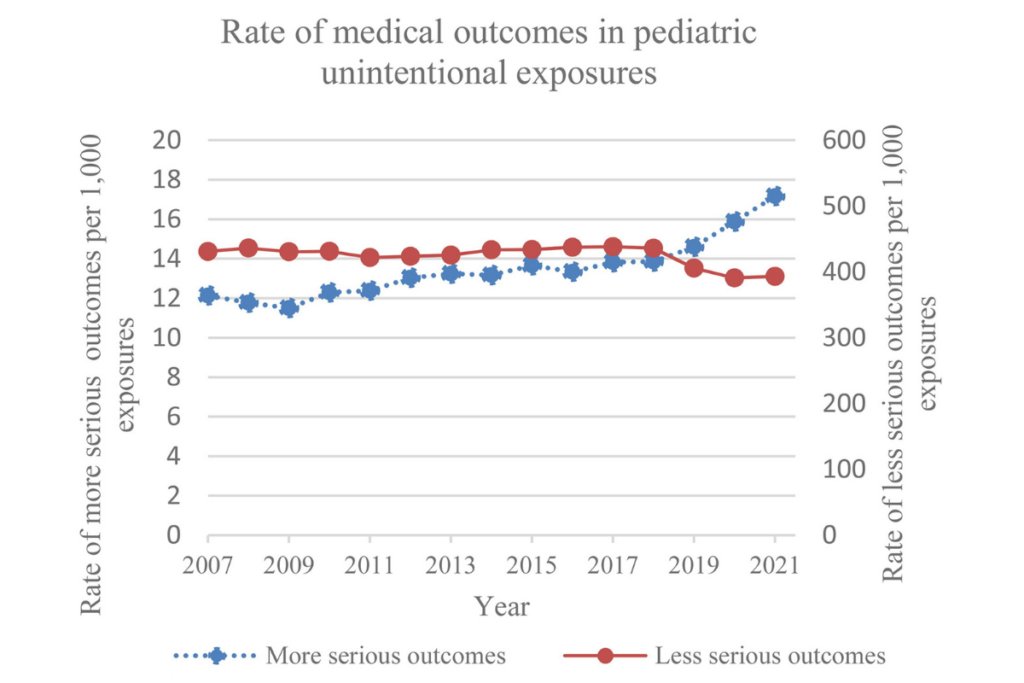Spikes in Severe Unintentional Pediatric Poisoning
Despite ongoing safety measures and public education efforts, severe pediatric poisoning cases continue to rise.

Read Time: 2 minutes
Published:
Accidental poisonings remain a significant health concern in the United States. Recent data reveals an alarming increase in severe pediatric poisoning cases, despite ongoing safety measures and public education efforts.
Rita Farah and colleagues analyzed medical outcomes of exposures involving individuals aged 19 years and younger reported to the National Poison Data System from 2007-2021. This system is the data warehouse for the 55 poison centers in the U.S.
The researchers found that while the overall number of reported pediatric unintentional exposures decreased by 33% during the study period, from 1,495,587 cases in 2007 to 1,003,232 cases in 2021, the severity of outcomes increased. The number of cases resulting in major effects (defined as life-threatening or causing significant disability) increased by 76.6% and fatalities rose by 51.1%, from 45 deaths in 2007 to 68 over the same period.

The figure above illustrates that over the 15-year study timeframe, the rate of more serious outcomes (including moderate effects, major effects, and death) from unintentional exposures increased noticeably, particularly after 2015. In contrast, the rate of less serious outcomes (no effect or minor effects) remained relatively stable.
The study identified substances frequently associated with severe outcomes in unintentional pediatric exposures, including clonidine, carbon monoxide, buprenorphine, marijuana edibles, and methadone. However, it’s important to note that the study doesn’t provide a breakdown of exposures or outcomes by specific age groups within the 0-19 age range, which limits our understanding of how risks and outcomes vary across different developmental stages.
The researchers suggest that the increase in severity may be due to children gaining greater access to highly toxic substances. They also note that the overall decline in reported exposures might be partly due to parents consulting web-based resources rather than calling poison centers for minor incidents.
Educating families about high-risk products and encouraging immediate contact with poison centers when exposure occurs remain crucial steps in reducing poisoning risk to children and teenagers.
Please program the nationwide poison control center number into your phones: (803-222-1222)



